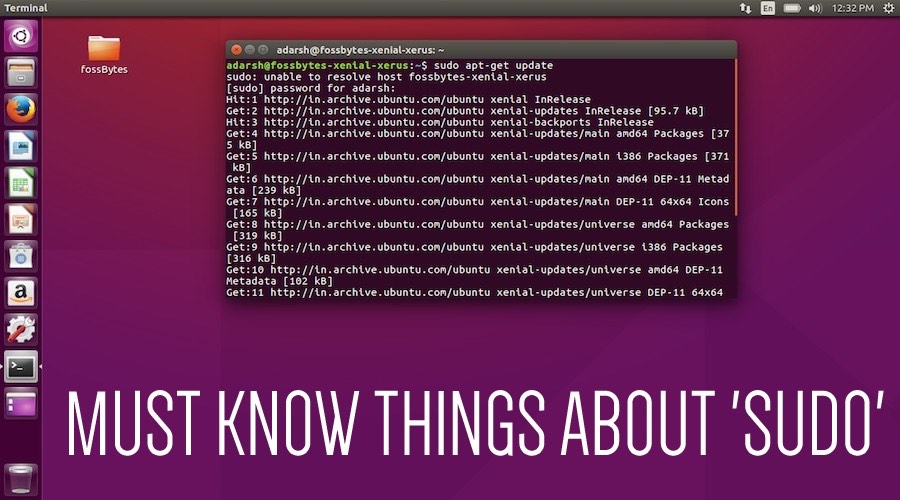

To add a group to the sudoers file, simply add a percent symbol at the beginning of the file. In this case, you simply have to add a user to the system administrators group for him/her to be granted sudo privileges. This might be handy if you have a group for system administrators for example. Via the visudo, you can add an entire group to the sudoers. Have you ever tried to edit a config file only to receive 'Permission Denied' (The /etc/hosts file comes to mind.) If so, that was because your user account did not have access to that file.
#LINUX SUDO HOW TO#
# See the man page for details on how to write a sudoers file.ĭefaults secure_path = /sbin:/bin:/usr/sbin:/usr/binĭefaults timestamp_timeout=30 III – Adding a group to the sudoers file Sudo stands for 'superuser do' and is the master key to your high-privilege admin tasks. # This file MUST be edited with the 'visudo' command as root.
#LINUX SUDO VERIFICATION#
If you want the password verification to be skipped for longer periods of time, you can overwrite the timestamp_timeout (in minutes) parameter in your sudoers file. However, if you want to remove this password verification, you can set the NOPASSWD option.

john ALL=(ALL:ALL) ALLīy default, the account password will be asked every five minutes to perform sudo operations. $ sudo visudoĪt the end of the file, add a new line for the user. Instead, you are going to use visudo, a tool designed to make sure you don’t do any mistakes. Saving a bad sudoers may leave you with the impossibility of getting sudo rights ever again. However, you should never modify the sudoers file with a text editor. This file contains a set of rules that are applied to determine who has sudo rights on a system, which commands they can execute with sudo privileges, and if they should be prompted a password or not. The sudoers file is located at /etc/sudoers. II – Adding an existing user to the sudoers file Otherwise, the default admin account is the one you created during the installation process. If you chose a password for your root account, you will be able to connect to it. You should now be able to perform a sudo request on Debian 10.ĭepending on the configuration you chose during your Debian 10 installation process, you may or may not have access to a root account.

Make sure that the user belongs to the sudo group with the groups command. You can also use the gpasswd command to grand sudo rights. To do that, you are going to use the “usermod” command with the capital G flag (for groups) $ sudo usermod -a -G sudo user The first method is to add the user to the sudo group.
#LINUX SUDO INSTALL#
If it’s not the case, you can install it by running (with an account with admin rights) $ apt-get update I – Adding an existing user to the sudo groupĪs a prerequisites, make sure that the sudo command is available by default. III – Adding a group to the sudoers file A cosa serve sudo In generale Sudo è utile per eseguire comandi su Linux come altri utenti, con i privilegi di sicurezza di un altro utente.II – Adding an existing user to the sudoers file.I – Adding an existing user to the sudo group.The sudo configuration is managed by the /etc/sudoers file. With sudo the user can (and probably should) be required to provide a password in order to execute the application. If the setuid bit is set on an executable, any user would be able to run the application (or any user of a certain group, depending on the permissions used). With sudo a clear list can be made of who can execute a certain application. Unlike using the setuid bit on these applications sudo gives a more fine-grained control on who can execute a certain command and when. The app-admin/sudo package allows the system administrator to grant permission to other users to execute one or more applications they would normally have no right to. This is very useful when tracking who made that one fatal mistake that took 10 hours to fix :) One additional advantage of sudo is that it can log any attempt (successful or not) to run an application. Root # emerge -ask app-admin/sudo Configuration Logging activity


 0 kommentar(er)
0 kommentar(er)
